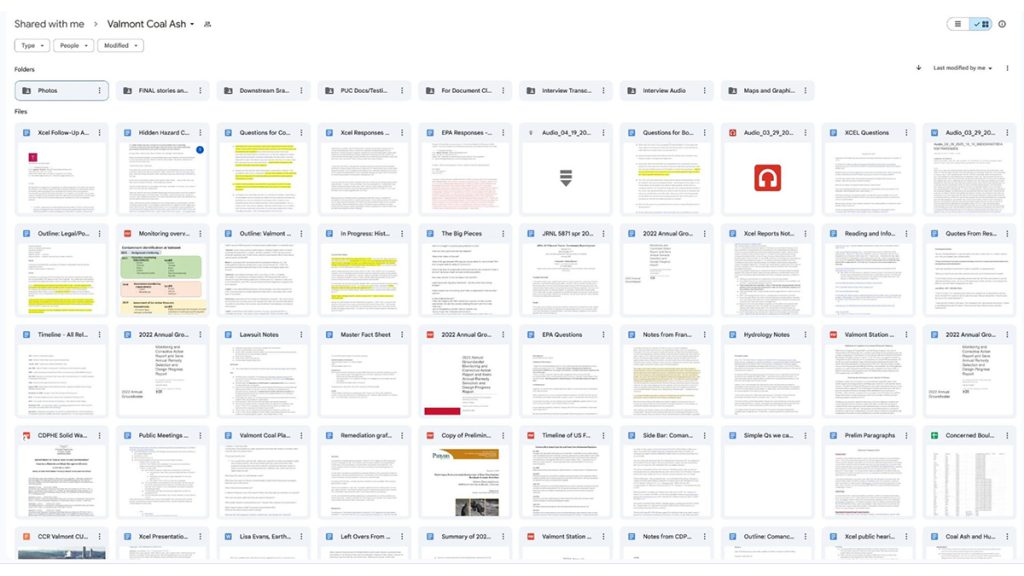
Screenshot of Google Drive for pop-up investigative project led by Boulder Reporting Lab
Helping solve the news crisis through pop-up apprentice newsrooms
Let’s innovate together to address the decline in hyperlocal investigative journalism
The recent Northwestern report on the local news crisis highlighted a concerning fact: Over the past two decades, 43,000 local newspaper jobs were lost across the United States. While the return of all those jobs seems unlikely, at Boulder Reporting Lab, our mission is to at least revive reporting capacity in our community.
In the 1980s, Boulder, Colorado’s primary local newspaper had a newsroom of 70 people, covering a county with 70% fewer residents than today. Closer to seven full-time journalists are attempting the same coverage across various organizations. In markets our size, supporting more than a small newsroom is nearly impossible. Creativity becomes crucial to revive in-depth community reporting, address urgent information needs and foster trust through meaningful journalism made locally for locals.
One avenue to meet this challenge is pop-up community newsrooms. Boulder Reporting Lab has launched two such newsrooms dedicated to local investigations. One focused on the victims of the Marshall Fire with smoke damage, while other uncovered the pressing environmental impact of an overlooked coal ash site.
These projects inspired me to become an RJI Fellow to develop a guide for newsrooms to establish their own pop-ups. The hope is collaboration between journalists and their communities can resurrect in-depth reporting capacity in times of great information need.
Outside-the-box thinking is required in any investigative reporting endeavor. When done in a small newsroom it requires added perseverance. Community partners can ease that burden and contribute valuable new perspectives to the reporting process.
Pop-ups aren’t new. For years, newsrooms have used them to temporarily increase reporting capacity. But, there is room for more innovative approaches.
Our temporary newsrooms weren’t just pop-ups. They operated as apprentice newsrooms, providing educational experiences for aspiring journalists or those just curious about the journalism process.
As one student who participated in our Marshall Fire pop-up put it, “This story speaks for itself as to what we can accomplish through #localjournalism, but it also speaks to what journalism education might look like through collaboration with local media partners, journalism professors and determined student journalists.”
This apprentice approach is gaining traction in the industry. The recently launched NOTUS, for instance, pairs emerging reporters with accomplished journalists in Washington D.C. to cover government, politics and the 2024 campaign — resulting in a blend of fresh perspectives and veteran expertise.
By combining pop-up and apprentice models, we’re starting to address the hyperlocal news investigative crisis and ensuring innovative approaches are seriously considered. Imagine a pop-up apprentice newsroom where students on a high-school student newspaper collaborate with a professional newsroom to investigate topics no longer under the watchful eye of journalists. As we continue exploring ways to use the pop-up idea on future projects in our town, that just might be our next enterprise.
What are your ideas to address this problem — with pop-up solutions or otherwise? Talk to me!

Comments